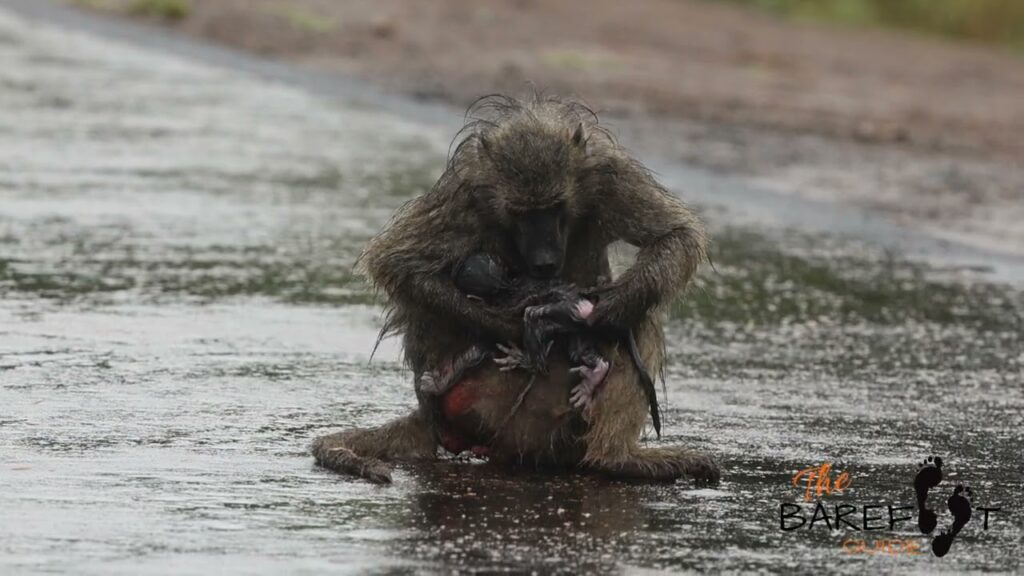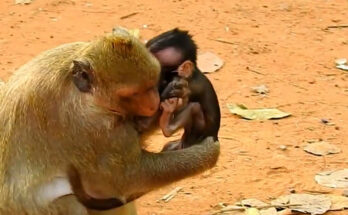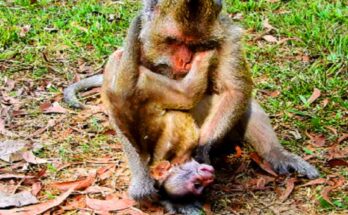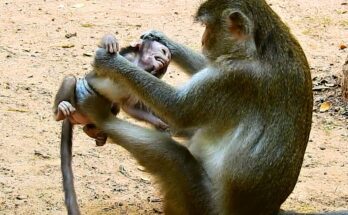
The birth of a baby baboon is one of the most emotional and fascinating moments in the wild. It is a reminder of the cycle of life and the strength of maternal instincts. When a baboon mother goes into labor, she often separates herself slightly from the troop, choosing a safe spot where she feels secure. This instinctive behavior helps protect both her and the newborn from potential danger during the vulnerable moments of birth.
As the baby arrives, the mother immediately begins to clean and comfort her newborn, carefully removing any afterbirth and ensuring the infant can breathe clearly. Within minutes, the tiny baboon, still wet and fragile, clings tightly to its mother’s fur. This bond of touch is the very first connection between them, and it becomes the foundation of their relationship.
The troop usually shows great interest in the new arrival. Female relatives often gather close, watching with curiosity and sometimes even offering gentle touches. This sense of community is important, as other troop members will help protect the baby as it grows. The newborn spends its early weeks clinging to the mother’s chest, where it feels warmth and safety, while feeding frequently to gain strength.
Life for a baby baboon is not without challenges. The mother must balance the needs of her infant with the demands of survival—finding food, staying alert for predators, and keeping up with the troop’s movements. Despite these difficulties, the maternal bond is powerful, and the mother rarely lets her baby out of sight.
Witnessing a baboon give birth is truly a touching scene. It shows resilience, tenderness, and the natural cycle of life in the wild. Each new life born strengthens the troop and ensures the continuation of their species.


